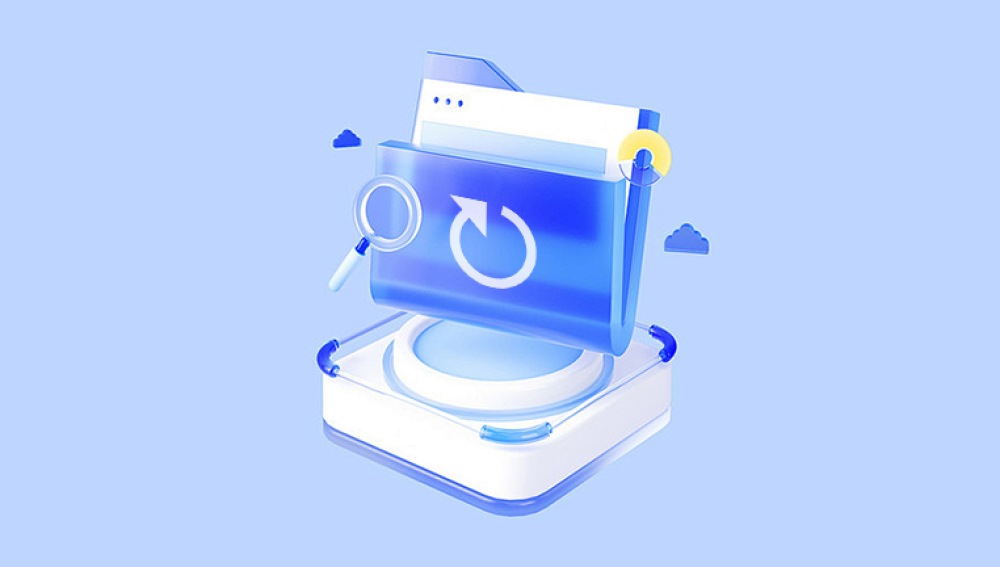The relief is, not all hope is lost. Word documents, whether deleted intentionally or by accident, can often be recovered using built-in features in Microsoft Word, Windows, and cloud services.
When you delete a Word document:
It may go to the Recycle Bin (Windows) or Trash (Mac).
It may still be stored in OneDrive’s Recycle Bin if synced.
If unsaved, it might be temporarily held in AutoRecover folders.
Previous versions could be stored through File History or Shadow Copies.
Even permanently deleted files may be retrievable using data recovery software if they haven’t been overwritten.

Method 1: Check the Recycle Bin
The first place to check is the Recycle Bin, where deleted files go unless they’re removed with Shift + Delete or via command line.
How to Recover:
Double-click the Recycle Bin on your desktop.
Sort by Date Deleted or use the Search bar to locate your file.
Right-click the document and select Restore.
The file will return to its original folder.
If your file isn't there, it may have been permanently deleted or deleted via an external process, such as a disk cleanup.
Method 2: Recover from OneDrive Recycle Bin
If you use OneDrive, your documents may still be safe in the cloud. When you delete a Word file stored in OneDrive, it goes to its own Recycle Bin—even after being removed from your computer.
Steps:
Go to onedrive.live.com and log in.
On the left menu, click Recycle bin.
Find your deleted document and select Restore.
OneDrive typically retains deleted files for 30 days, depending on your account type and usage activity.
Method 3: Use Word’s AutoRecover Feature
Sometimes you didn’t delete the document—you just closed Word without saving. In this case, Word’s AutoRecover feature may have preserved a temporary draft.
Steps:
Open Word.
Go to File > Info > Manage Document > Recover Unsaved Documents.
A file explorer window opens, usually showing .asd files.
Select the file you need and open it.
Save it immediately.
Word saves AutoRecover data every 10 minutes by default, but you can configure this in Options > Save.
Method 4: Restore from File History (Windows Backup)
If File History is enabled on your Windows system, it automatically creates backups of files at regular intervals.
To Restore:
Go to the folder where your Word document was originally saved.
Right-click in the folder and choose Properties.
Go to the Previous Versions tab.
Select a version of the folder from a date when the document existed.
Click Restore to recover the whole folder or open it to extract the file.
Ensure File History is enabled under Control Panel > System and Security > File History.
Method 5: Use Windows’ Backup and Restore
Older versions of Windows include Backup and Restore (Windows 7), which may still function on current systems.
To Restore Files:
Open Control Panel > Backup and Restore (Windows 7).
Click Restore my files.
Search for the document or browse backup folders.
Select and restore it to your desired location.
This works only if you've previously set up Windows Backup.
Method 6: Recover with the “Restore Previous Versions” Option
Windows includes a hidden gem: the ability to restore previous versions of files or folders using shadow copies.
How It Works:
Navigate to the folder where your file was last located.
Right-click on the folder and choose Restore previous versions.
A list of available versions will appear.
Open each to check for the file or restore the whole folder.
Keep in mind: This depends on System Protection being enabled and Restore Points existing before deletion.
Method 7: Search for AutoRecover Files Manually
AutoRecover files can be found in system folders, even if they don’t appear in Word’s interface.
Locate AutoRecover Files:
Press Windows + R, type %AppData%\Microsoft\Word, and hit Enter.
Look for .asd or .wbk files (AutoRecover and backup files).
Open them with Word.
Save them immediately with a proper name.
Make sure hidden files and folders are visible to access this directory.
Method 8: Use Data Recovery Software
Drecov Data Recovery supports recovery of DOC and DOCX formats, along with a wide range of other file types. Its intuitive interface allows users of all experience levels to locate and restore deleted Word documents from hard drives, USB flash drives, memory cards, and even external storage devices. Using advanced scanning technology, the software digs deep into your storage to find files that traditional methods miss even those deleted permanently or from formatted partitions.
To recover a deleted document:
Launch Drecov Data Recovery.
Select the location where the document was last saved.
Click "Scan" to begin searching.
Preview the results and recover the desired file.
For users who value their time and data, Panda also offers quick scan and deep scan modes to balance speed and thoroughness. With its built-in file preview feature, you can confirm the document’s contents before recovery—saving time and ensuring accuracy.
Method 9: Recover from Temporary Files
Word sometimes creates temporary files that can be manually recovered.
How to Find:
Open File Explorer.
Navigate to %temp% using the address bar.
Look for files starting with ~WRL, ~$, or .tmp.
Change file extension to .docx and open with Word.
Save under a new name.
Temporary files are fragile and usually deleted on reboot, so act quickly.
Method 10: Check the Word Recent Documents Section
Sometimes you haven’t lost the file but simply forgot where it was saved.
Steps:
Open Word.
Go to File > Open > Recent.
Look for the document name or a related filename.
Click to open and save it again.
You can right-click and choose Open file location to find the document’s folder.
Method 11: Recover from Outlook (If Emailed or Shared)
If you’ve shared or emailed the document via Outlook or another email client, you may find a copy in your Sent folder or attachments.
How to Check:
Open Outlook.
Search for the document title or keyword.
Look in Sent Items, Drafts, or Attachments.
Download and save any attached Word files.
This method is helpful for collaborative projects or sent assignments.
Method 12: Use OneDrive Version History
If the file is stored in OneDrive and overwritten instead of deleted, you can recover earlier versions.
How to Use:
Go to onedrive.live.com.
Locate your file.
Click the three dots (…) > Version History.
Browse and restore an earlier version.
This is especially useful for files that were mistakenly altered or corrupted.
Method 13: Recovery on Mac Systems
Mac users also have a variety of options, including:
Trash:
Check the Trash bin for deleted documents.
AutoRecovery:
Go to ~/Library/Containers/com.microsoft.Word/Data/Library/Preferences/AutoRecovery/.
Time Machine:
If enabled, open Time Machine and navigate to the folder where the file was.
Spotlight Search:
Use Spotlight (Cmd + Space) to search for part of the filename or content.
Mac systems, like Windows, benefit from immediate action after data loss.
Method 14: Recover via Cloud Storage Services (Google Drive, Dropbox)
If you use third-party cloud platforms:
Dropbox:
Log in to Dropbox.
Navigate to the folder and click Deleted files.
Select and restore the file.
Google Drive:
Check the Trash.
Use Version History on collaborative files.
Many users unknowingly create backups in multiple cloud platforms through syncing or automated backup tools.
Method 15: Consult IT or Admin (Enterprise Environments)
If your Word document was created on a work, school, or managed account, your system administrator may have access to:
Cloud backups
Network drive versions
Managed endpoint recovery tools
Reach out to your IT department promptly with file details and deletion time.
Preventative Measures: Never Lose a Document Again
While recovery is possible, prevention is always better. Follow these tips:
1. Enable AutoSave:
Use OneDrive and turn on AutoSave at the top of Word.
2. Configure AutoRecover:
Set AutoRecover to save every 1 minute under File > Options > Save.
3. Use Versioning:
Use OneDrive or Dropbox for automatic file versioning.
4. Create Backup Copies:
Enable “Always create backup copy” in Word Options > Advanced > Save.
5. Save Early, Save Often:
Use keyboard shortcuts (Ctrl+S / Cmd+S) regularly.
6. Use File Naming Conventions:
Include timestamps or version numbers in filenames.
7. Keep Backups on External Drives:
Manually back up key files weekly to USB or external drives.
Recovering a deleted Word document is entirely possible with the right tools, quick action, and a bit of know-how. Whether your document disappeared due to accidental deletion, corruption, or an unsaved session, there’s likely a method that can bring it back. From built-in Windows recovery tools to cloud platforms like OneDrive and Dropbox, Microsoft Word offers users a safety net of features designed to preserve your work.
The key to a successful recovery lies in acting quickly, using structured methods, and knowing where to look. And once you’ve gone through the stress of losing a document, take it as a sign to improve your digital habits—automated backups, cloud storage, and frequent saves can prevent future panic.




